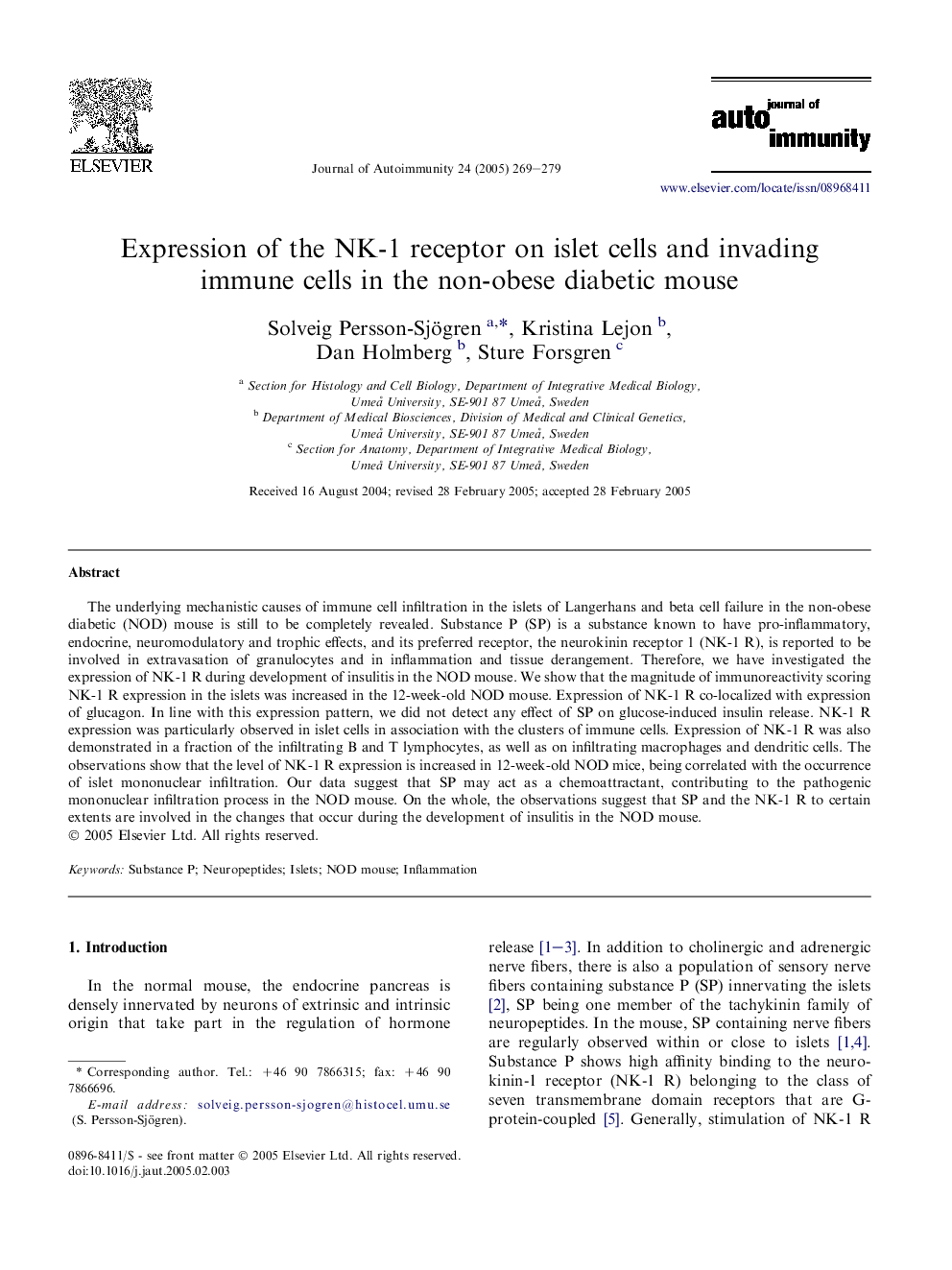| Article ID | Journal | Published Year | Pages | File Type |
|---|---|---|---|---|
| 9267866 | Journal of Autoimmunity | 2005 | 11 Pages |
Abstract
The underlying mechanistic causes of immune cell infiltration in the islets of Langerhans and beta cell failure in the non-obese diabetic (NOD) mouse is still to be completely revealed. Substance P (SP) is a substance known to have pro-inflammatory, endocrine, neuromodulatory and trophic effects, and its preferred receptor, the neurokinin receptor 1 (NK-1 R), is reported to be involved in extravasation of granulocytes and in inflammation and tissue derangement. Therefore, we have investigated the expression of NK-1 R during development of insulitis in the NOD mouse. We show that the magnitude of immunoreactivity scoring NK-1 R expression in the islets was increased in the 12-week-old NOD mouse. Expression of NK-1 R co-localized with expression of glucagon. In line with this expression pattern, we did not detect any effect of SP on glucose-induced insulin release. NK-1 R expression was particularly observed in islet cells in association with the clusters of immune cells. Expression of NK-1 R was also demonstrated in a fraction of the infiltrating B and T lymphocytes, as well as on infiltrating macrophages and dendritic cells. The observations show that the level of NK-1 R expression is increased in 12-week-old NOD mice, being correlated with the occurrence of islet mononuclear infiltration. Our data suggest that SP may act as a chemoattractant, contributing to the pathogenic mononuclear infiltration process in the NOD mouse. On the whole, the observations suggest that SP and the NK-1 R to certain extents are involved in the changes that occur during the development of insulitis in the NOD mouse.
Related Topics
Life Sciences
Immunology and Microbiology
Immunology
Authors
Solveig Persson-Sjögren, Kristina Lejon, Dan Holmberg, Sture Forsgren,
